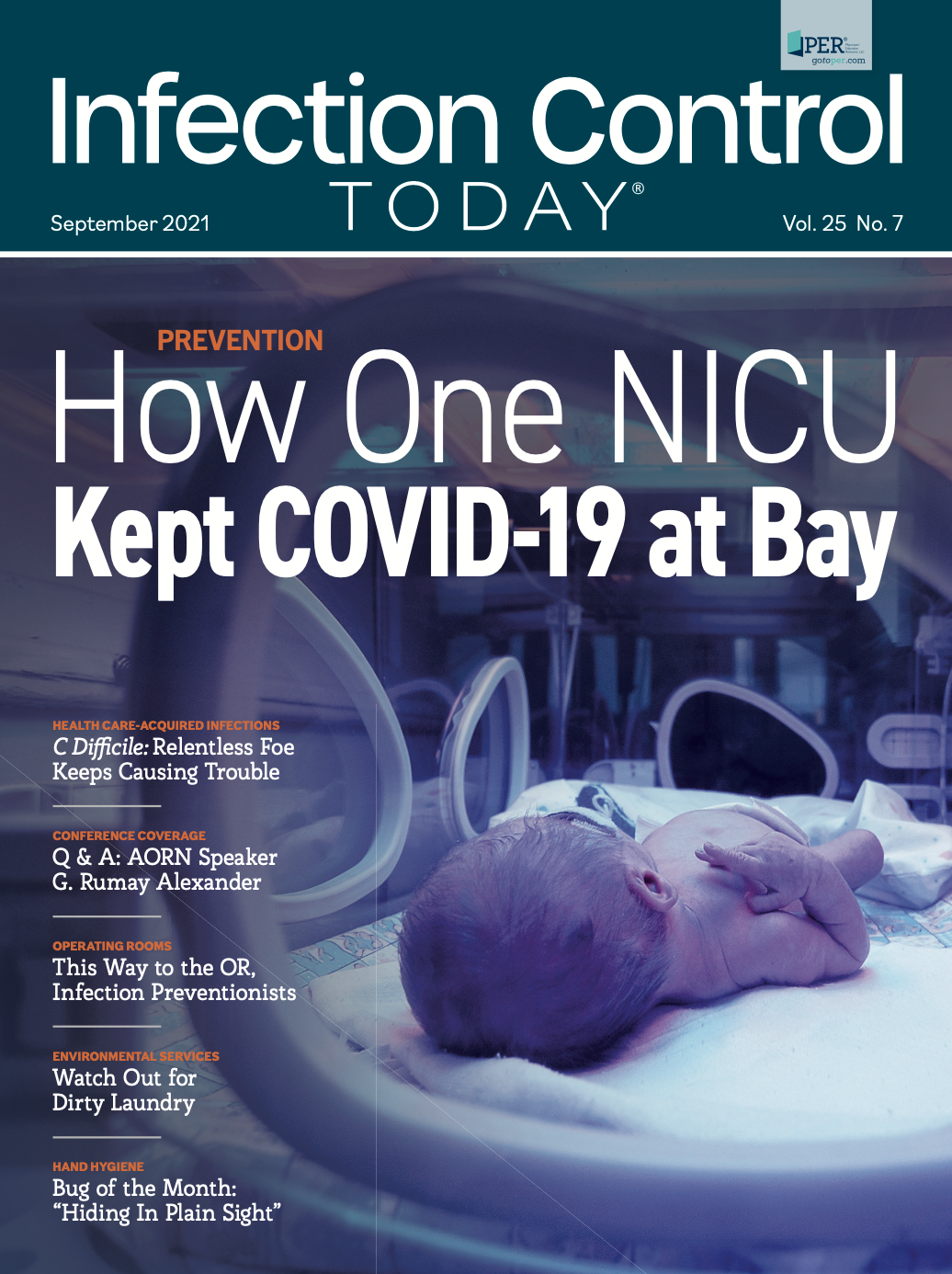Infection Preventionist Team Kills Cause of Laundry Contamination
Despite the fact that the processes and layout of the laundry facility met industry standards, infection prevention teams found a significant number of mucormycosis-causing cultures.
The COVID-19 pandemic underscored the need for infection preventionists (IPs) to work closely with other departments in hospitals such as environmental services, operating rooms, vascular access, and sterile processing teams. There’s also been discussion about how, despite demographic challenges, IP expertise may be needed beyond the health care setting, because the pandemic forces schools, businesses, public agencies—almost every segment of society—to become more familiar with common infection prevention and control processes.
But even IPs who intend to stay with hospitals might need to expand their reach beyond the walls of those facilities, according to a study in Clinical Infectious Diseases (CID).
An outbreak of mucormycosis among transplant patients spurred the intervention of IPs and administrators at the hospital. According to the Centers for Disease Control and Prevention (CDC), mucormycosis is a rare fungal infection. “Mucormycosis mainly affects people who have health problems or take medicines that lower the body’s ability to fight germs and sickness,” according to the CDC.
As a recent study in the American Journal of Medicine states, “mucormycosis is an increasingly well-reported invasive fungal infection that affects recipients of solid-organ transplant … and hematopoietic stem cell transplant and is associated with a high morbidity and mortality.”
The CDC says that mucormycosis “most commonly affects the sinuses or the lungs after inhaling fungal spores from the air. It can also occur on the skin after a cut, burn, or other type of skin injury.”
In the CID study, the IPs at the hospital investigated and found that health care linens (HCLs) delivered to the facility by an outside vendor were contaminated by Mucorales, one of the causes mucormycosis. They conducted an on-site inspection of the laundry service, according to investigators with the University of Pittsburgh School of Medicine who conducted the CID study, which helped them find the source of the infection and implement mitigation strategies.
“Targeted laundry facility interventions guided by site inspections and step-wise culturing significantly reduced Mucorales-contaminated HCLs delivered to our hospital,” the study concludes. “Collaboration between infection prevention and laundry facility teams was crucial to successful remediation.”
When the problem first surfaced, IPs began conducting Replicate Organism Detection and Counting (RODAC) cultures of linens when they arrived at the hospital. When they inspected the laundry service, they found a significant number of Mucorales cultures despite the fact that the processes and layout of the laundry facility met industry standards.
“Prior to remediation, 20% of HCLs were culture-positive for Mucorales upon hospital arrival,” the study states. “Laundry facility layout and processes were consistent with industry standards. Significant step-ups in Mucorales and mould culture-positivity of HCLs were detected at the post-dryer step (0% to 12% (p=0.04) and 5% to 29% (p=0.01), respectively). Further increases to 17% and 40% culture-positivity, respectively, were noted during pre-transport holding.”
As Infection Control Today® (ICT®) has reported, IPs need to become more cognizant of the crucial role ventilation plays in infection prevention and control at hospitals and other health care facilities such as nursing homes.
It could be argued that ventilation plays a crucial role in infection prevention in every building, including laundry facilities, as investigators found out. “Site inspection revealed heavy Mucorales-positive lint accumulation in rooftop air intake and exhaust vents that cooled driers; intake and exhaust vents that were facing each other; rooftop and plant-wide lint accumulation, including in the pre-transport clean room; uncovered carts with freshly-laundered HCLs,” the study states. “Following environmental remediation, quality assurance measures and education directed toward these sources, Mucorales culture-positivity of newly-delivered HCLs was reduced to 0.3% (p=0.0001); area of lint-contaminated rooftop decreased from 918 m 2 to 0 m 2 on satellite images.”
The study also highlights another point made repeatedly by experts who’ve spoken to ICT®: IPs need the backing of hospital administrators.
“Remediation was designed and implemented by infection prevention and facility leadership teams,” the study states.
